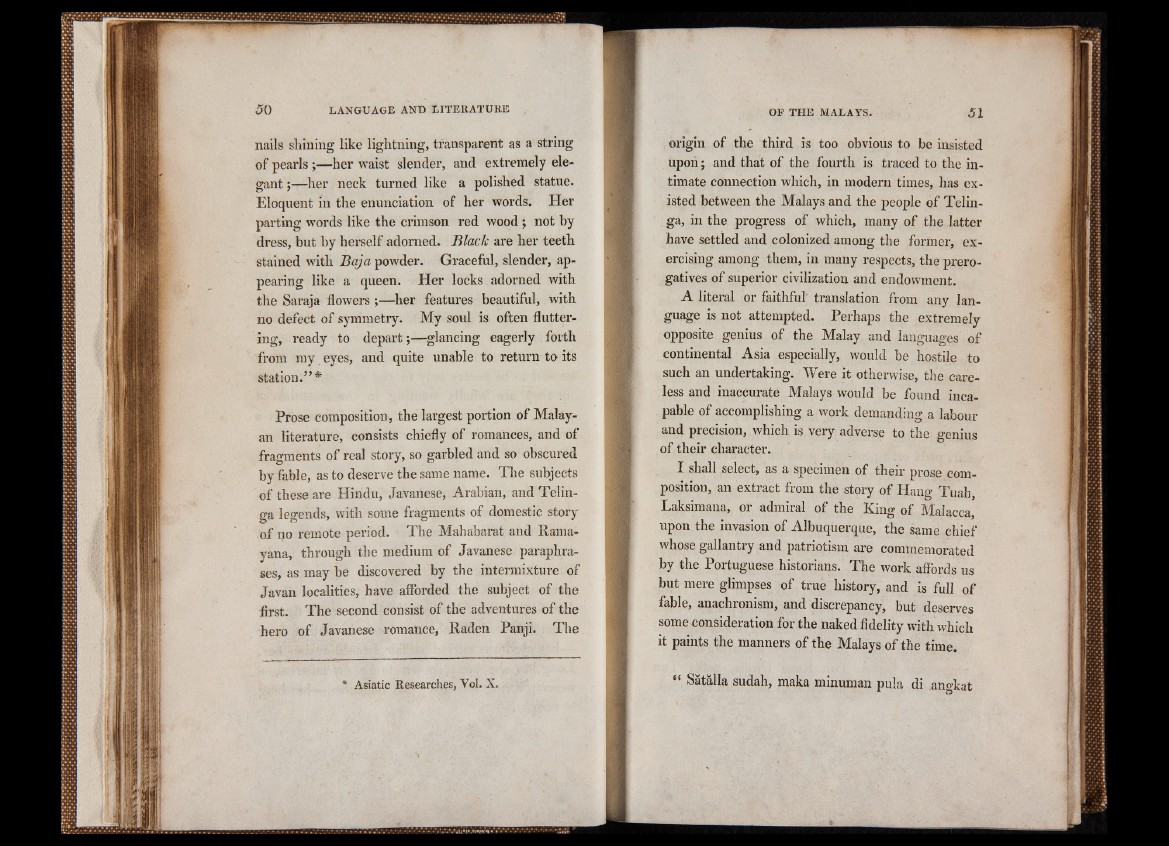
nails shining like lightning, transparent as a string
of pearls;—her waist slender, and extremely elegant
;—her neck turned like a polished statue.
Eloquent in the enunciation of her words. Her
parting words like the crimson red wood; not by
dress, but by herself adorned. Black are her teeth
stained with Baja powder. Graceful, slender, appearing
like a queen. Her locks adorned with
the Saraja flowers ;—her features beautiful, with
no defect of symmetry. My soul is often fluttering,
ready to depart;—glancing eagerly forth
from my eyes, and quite unable to return to its
station.” *
Prose composition, the largest portion of Malayan
literature, consists chiefly of romances, and of
fragments of real story, so garbled and so obscured
by fable, as to deserve the same name. The subjects
of these are Hindu, Javanese, Arabian, and Telin-
ga legends, with some fragments of domestic story
of no remote period. The Mahabarat and Rama-
yana, through the medium of Javanese- paraphrases,
as may be discovered by the intermixture of
Javan localities, have afforded the subject of the
first. The second consist of the adventures of the
hero of Javanese romance, Raden Panji. The
* Asiatic Researches, Vol. X.
origin of the third is too obvious to be insisted
upon; and that of the fourth is traced to the intimate
connection which, in modern times, has existed
between the Malays and the people of Telin-
ga, in the progress of which, many of the latter
have settled and colonized among the former, exercising
among them, in many respects, the prerogatives
of superior civilization and endowment.
A literal or faithful' translation from any language
is not attempted. Perhaps the extremely
opposite genius of the Malay and languages of
continental Asia especially, would be hostile to
such an undertaking. Were it otherwise, the careless
and inaccurate Malays would be found incapable
of accomplishing a work demanding a labour
and precision, which is very adverse to the genius
of their character.
I shall select, as a specimen of their prose composition,
an extract from the story of Hang Tuah,
Laksimana, or admiral of the King of Malacca
upon the invasion of Albuquerque, the same chief
whose gallantry and patriotism are commemorated
by the Portuguese historians. The work affords us
but mere glimpses of true history, and is full of
fable, anachronism, and discrepancy, but deserves
someconsideration for the naked fidelity with which
it paints the manners of the Malays of the time.
“ Satalla sudah, maka minuman pula di anekat